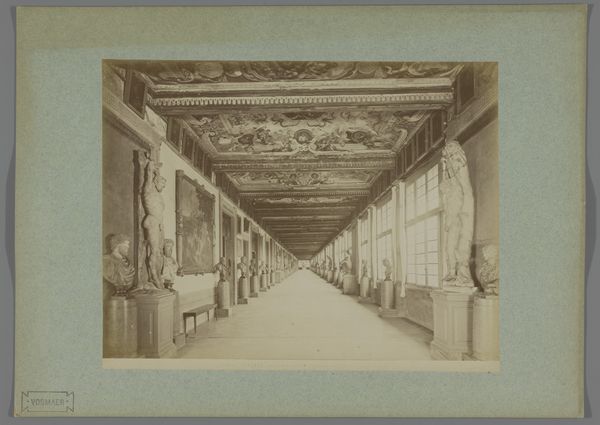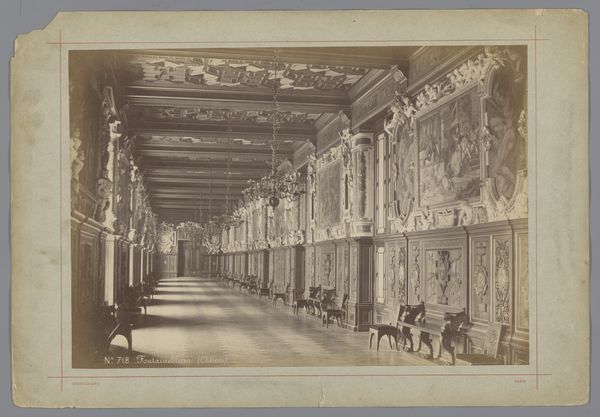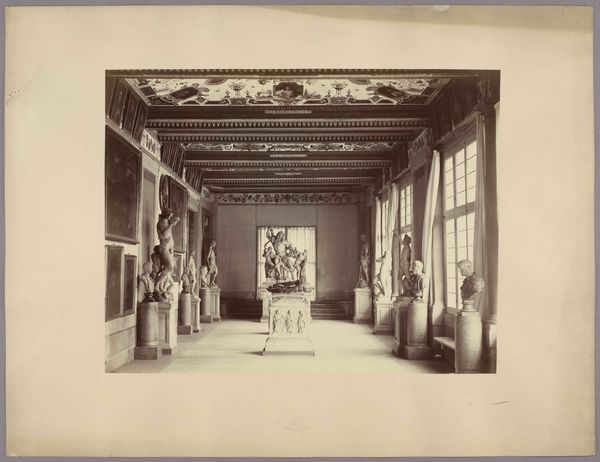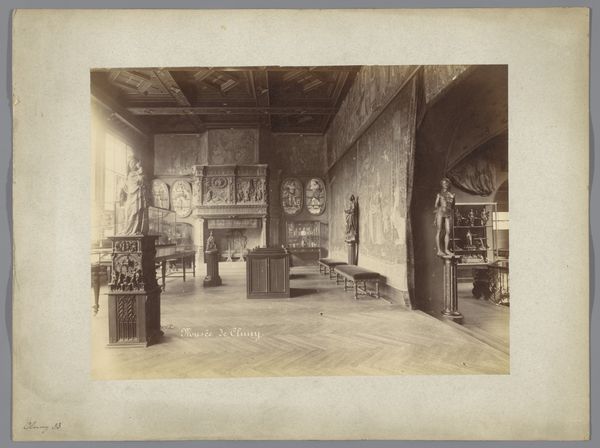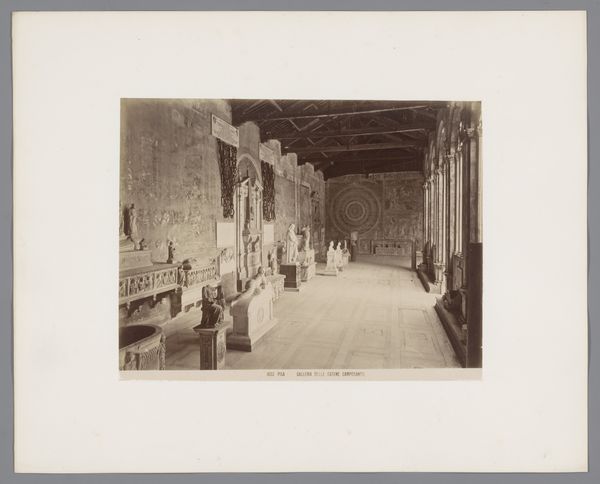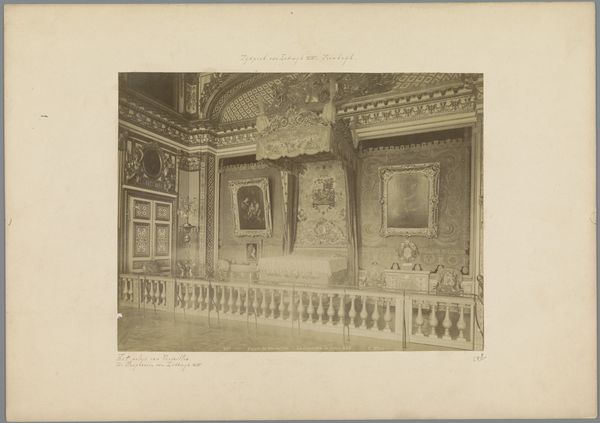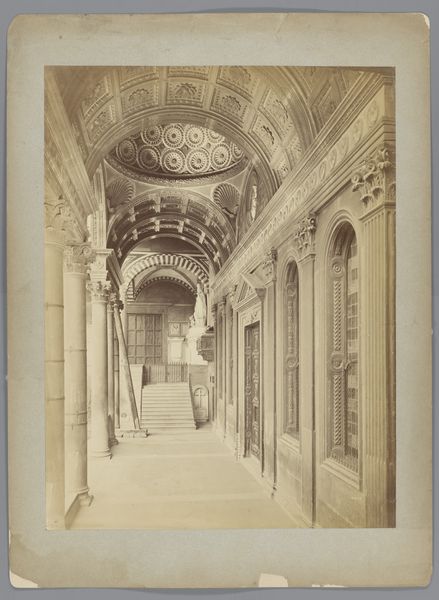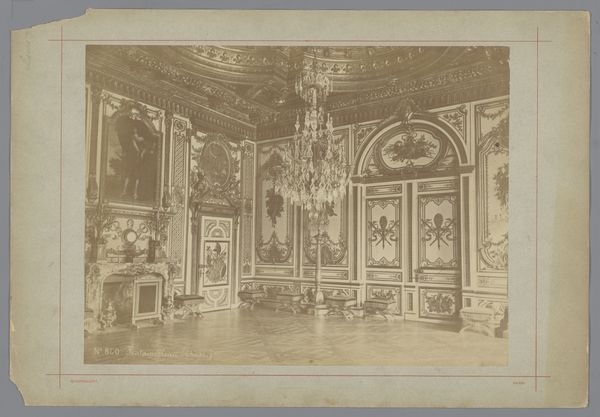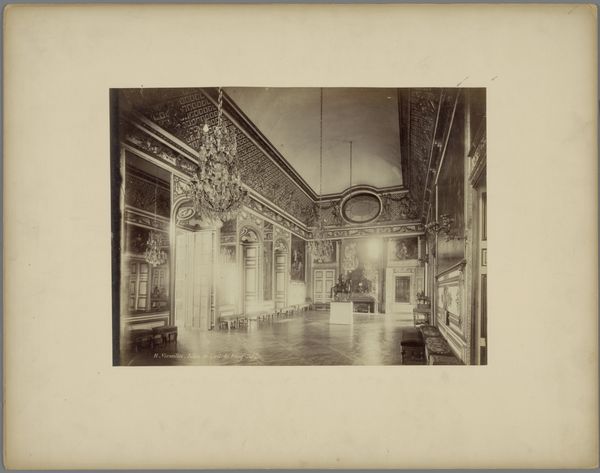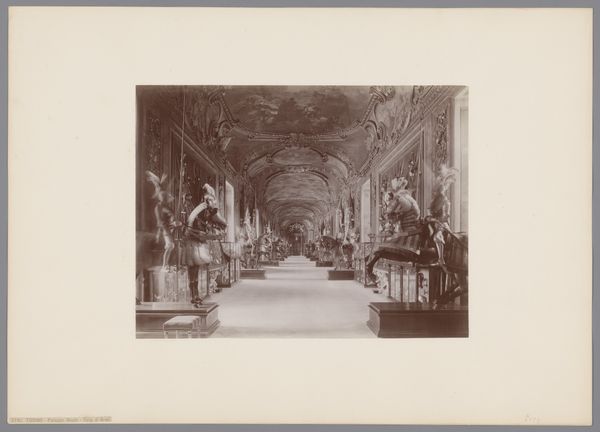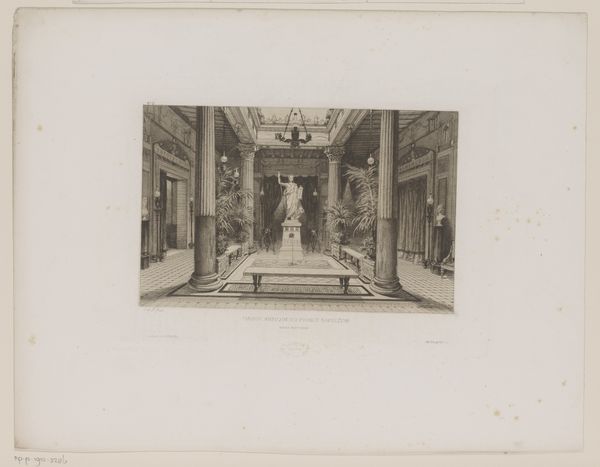
Florence_ R. Galleria Uffizi, Interior of the first runner, No. 1202 c. 1880 - 1890
0:00
0:00
albumen-print, print, paper, photography, albumen-print
#
albumen-print
#
portrait
# print
#
landscape
#
paper
#
photography
#
orientalism
#
cityscape
#
genre-painting
#
academic-art
#
albumen-print
#
realism
Copyright: Public Domain
Curator: This photograph, “Florence R. Galleria Uffizi, Interior of the first runner, No. 1202,” was captured by Fratelli Alinari, sometime between 1880 and 1890. The medium is albumen print. Editor: It's fascinating how the image emphasizes the sheer depth of the Uffizi. The linear perspective, enhanced by the repetitive display of artworks and statues, draws my eye right into the distance. The light and shadow create a stunning tonal harmony within the print, which makes the composition balanced. Curator: Indeed. The photograph offers insights into the cultural presentation of art at the time. We see how the gallery space itself becomes a curated experience, almost as crucial as the individual pieces on display. It’s important to recall the nineteenth century and the emergence of photography’s role in documenting and disseminating cultural heritage. Editor: I agree, but also notice the placement of the sculptures punctuates the scene, offering a tactile contrast to the two-dimensional paintings on the walls. How the geometry in architectural components and presented sculptures emphasizes spatial depth is interesting. Curator: It does emphasize the relationship between artwork and architectural space. The gallery becomes a stage where classical ideals are not merely viewed but embodied and, significantly, controlled and possessed by the state as trophies of civic pride and educational opportunities for citizens. Editor: Precisely! Also, this albumen print emphasizes contrast which is particularly noticeable on those foreground sculptures; it invites closer inspection of their textures and forms and simultaneously enhances the receding space. The repetitive architecture creates visual echoes adding rhythm and unifying design, while dark backdrops help draw out these featured pieces for viewing experience purposes. Curator: In essence, Alinari's photograph captured not just an image but a statement about cultural heritage, display conventions, and the democratizing potential of photography during the era of Realism and Academic art styles in 19th century Italy. Editor: Yes. Overall, from a formal perspective, the photograph skillfully uses light, line, and the arrangement of objects to create a compelling viewing experience while evoking emotional responses of order, refinement and respect for space contained within these structures.
Comments
No comments
Be the first to comment and join the conversation on the ultimate creative platform.
